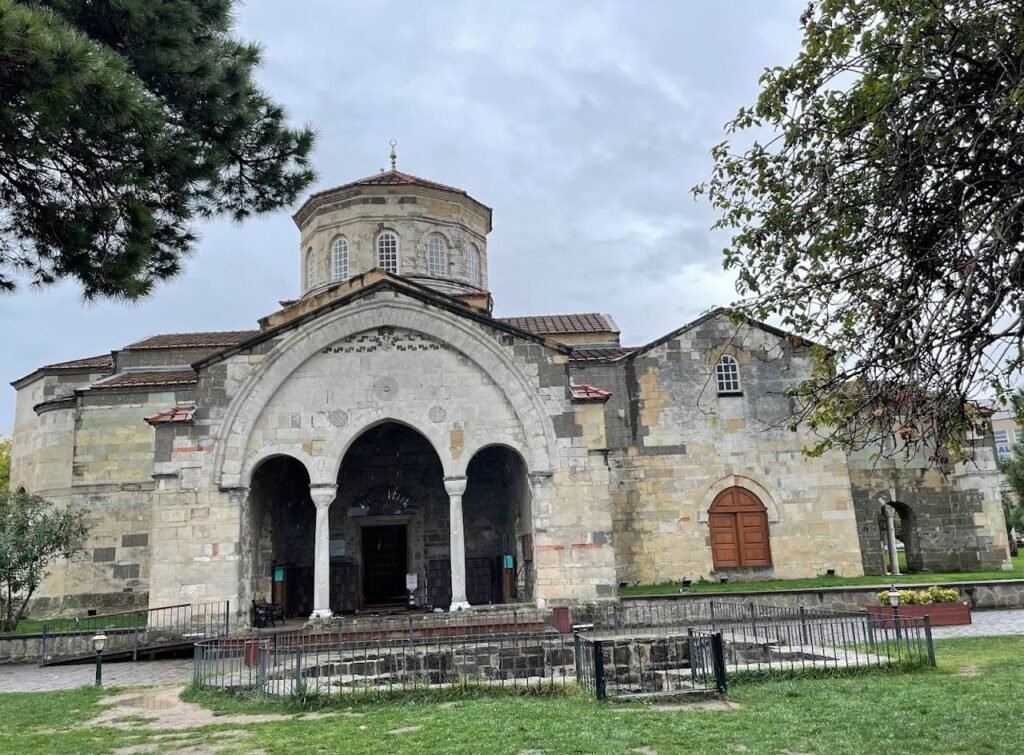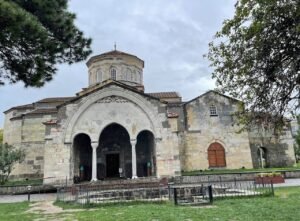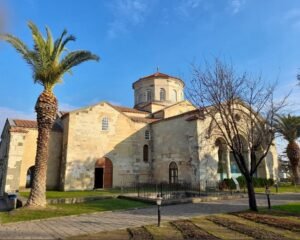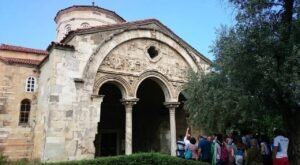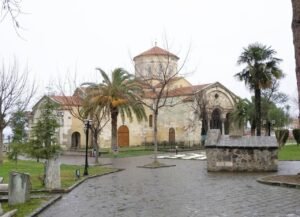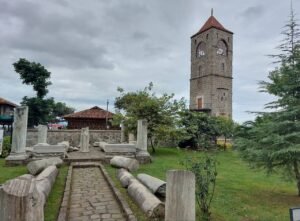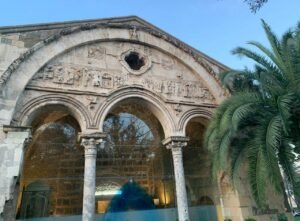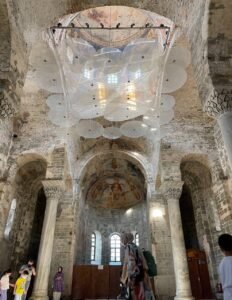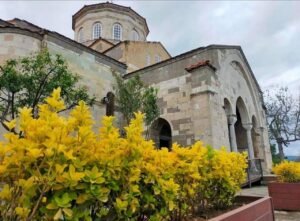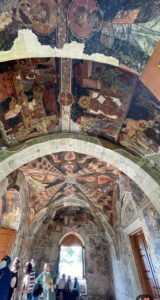Description
Exploring the Timeless Beauty of Hagia Sophia in Trabzon, Turkey
Perched gracefully on a hill overlooking the shimmering Black Sea, the Hagia Sophia of Trabzon is one of Turkey’s most captivating historical treasures. Distinct from its namesake in Istanbul, this monument carries a unique charm that reflects the layered history of the region — a testament to centuries of religious, architectural, and cultural evolution. For travelers venturing to the northeastern corner of Turkey, a visit to this remarkable structure offers a window into the past and a serene experience in the present.
A Legacy Carved in Stone
The Hagia Sophia in Trabzon (Turkish: Ayasofya) was built during the reign of Manuel I Komnenos, a ruler of the Empire of Trebizond, around the mid-13th century. This was a period when the region flourished as a Byzantine offshoot after the fall of Constantinople in 1204. The church was originally constructed as a Greek Orthodox place of worship, embodying the refined architectural styles and spiritual grandeur of the era.
What sets this Hagia Sophia apart is its unique combination of Byzantine and local architectural elements. The structure boasts a cross-in-square design with a central dome, surrounded by beautiful arcades and colonnades. Its decorative stone carvings, especially on the portals and windows, illustrate a remarkable level of craftsmanship and artistic vision. The western entrance is particularly striking, adorned with intricate reliefs that blend Christian iconography with regional influences.
Mosaics and Frescoes: A Glimpse into the Divine
One of the most breathtaking features of the Hagia Sophia in Trabzon is its interior, which houses rare examples of late Byzantine frescoes. Despite centuries of wear, many of these paintings have survived — fragments that still convey profound spiritual energy and artistic brilliance. These frescoes depict scenes from the New Testament, such as the Last Judgment, the Ascension of Christ, and the Pentecost, each rendered with expressive figures and rich colors.
Visitors often find themselves pausing in silence, mesmerized by the beauty and complexity of these sacred images. Art historians regard these frescoes as some of the finest examples of Byzantine art in Anatolia. Their survival through various transformations of the building — from church to mosque to museum and back to mosque — speaks to their enduring power and significance.
A Changing Spiritual Identity
The history of the Hagia Sophia reflects the shifting tides of religion and empire. When the Ottoman Empire conquered Trabzon in 1461, the building was converted into a mosque, as was customary with many Christian sites in newly acquired territories. A wooden minaret was added, and some of the Christian imagery was covered or plastered over.
In the early 20th century, after the establishment of the secular Republic of Turkey, the Hagia Sophia was used as a hospital and depot before being converted into a museum in 1964. This change allowed for the restoration and public display of its Christian elements, including the frescoes and mosaics. Tourists and scholars alike were drawn to this rare opportunity to witness a confluence of civilizations in one structure.
However, in 2013, the building was re-designated as a mosque, leading to a renewed phase of controversy and adaptation. Protective curtains and lighting systems were installed to obscure the Christian imagery during prayer times, while still allowing visitors to appreciate the artwork during off-hours. Despite these changes, the site remains open to tourists and continues to draw visitors from around the world, intrigued by its layered narrative.
Visiting Today: A Blend of Reverence and Discovery
Travelers visiting Trabzon’s Hagia Sophia today are greeted by a peaceful garden setting, with neatly trimmed hedges, flowering trees, and panoramic views of the sea below. The quiet, almost contemplative atmosphere adds to the sacred aura of the site. Whether you are a history enthusiast, an art lover, or a spiritual seeker, the experience is deeply enriching.
Entry is typically free, although modest clothing is required due to its active mosque status. Visitors are welcome outside prayer times, and photography is permitted in most areas. Informational panels in multiple languages provide context, but for a more in-depth understanding, hiring a local guide is highly recommended.
The surrounding area also offers opportunities for exploration. The gardens surrounding the Hagia Sophia are perfect for a leisurely walk, and the nearby tea gardens provide a refreshing break with views of the Black Sea. The city center of Trabzon is only a short drive away, bustling with local eateries, bazaars, and cultural landmarks.
How to Get There
Trabzon is well connected by domestic flights from Istanbul and Ankara, with its airport located just a 15-minute drive from the Hagia Sophia. Taxis and local buses are readily available, and the site is also accessible by rental car. Many travelers also combine a visit to the Hagia Sophia with other regional attractions, such as the stunning Sumela Monastery or the highland villages of Uzungöl and Ayder.
Final Thoughts
The Hagia Sophia of Trabzon is more than just a building — it is a narrative etched into stone, paint, and prayer. It embodies the confluence of Eastern Orthodox, Islamic, and secular Turkish identities, offering a rare glimpse into how history shapes and reshapes sacred spaces.
For those who venture to Turkey’s Black Sea coast, this site offers not only visual splendor but also a profound reflection on the layers of faith, culture, and time. It stands as a silent witness to centuries of change — and an enduring beacon of the artistic and spiritual heritage of Anatolia.
Location
-
Fatih, 61030 Ortahisar/ترابزون
